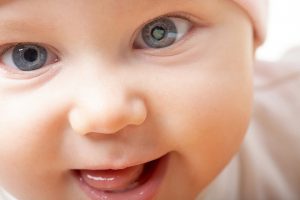PAEDIATRIC CATARACT
 Our paediatric ophthalmologists at Glen Iris Eye Specialists are fully trained in assessment, surgical management and visual rehabilitation of a child with cataracts.
Our paediatric ophthalmologists at Glen Iris Eye Specialists are fully trained in assessment, surgical management and visual rehabilitation of a child with cataracts.
Childhood cataracts may be unilateral or bilateral and can vary widely in size, morphology and severity, from a small white dot on the front of the lens to a total opacification of the lens. Consequently, the effect on vision, course of treatment and prognosis may also be widely variable. Severe cataracts require immediate attention.
Cataracts can be inherited, result from infections before birth, or occur spontaneously. They may be a part of another disease or syndrome or associated with isolated ocular abnormalities such as microphthalmia, coloboma of the iris, aniridia, or after trauma. Cataracts may be present at birth or develop during childhood.
The majority of bilateral congenital cataracts not associated with a syndrome have no identifiable cause. Over fifteen genes involved in cataract formation have been found, and the inheritance is usually autosomal dominant. Both parents should be examined to check for signs. In the absence of a genetic cause testing for infections before birth or metabolic disorders may need to be performed by blood and urine testing.
In contrast, most unilateral cataracts are not inherited or associated with a systemic disease. They are usually the result of abnormal development of the eye.
The most serious complication of congenital cataracts is permanent visual impairment. When the visual axis is blocked by a lens opacity during the sensitive period of visual development (infancy), irreversible amblyopia (poor vision) and permanent nystagmus (unsteady, moving eyes) may result.
It is very important your child is examined urgently to determine the severity, and underlying cause, so that appropriate treatment can commence without delay.
Visually threatening cataracts require prompt surgical treatment and ongoing management to rehabilitate lost vision.
To read more about paediatric cataract surgery
